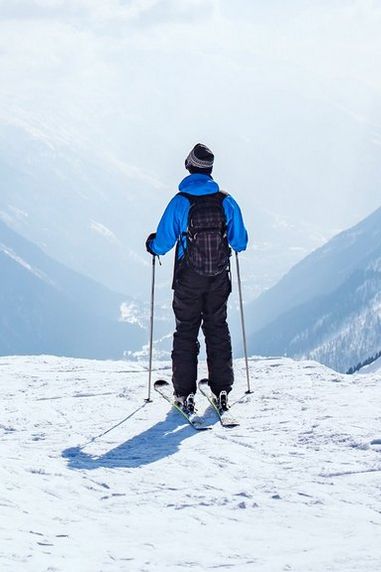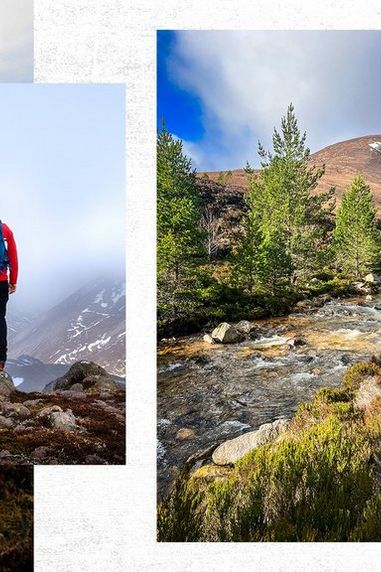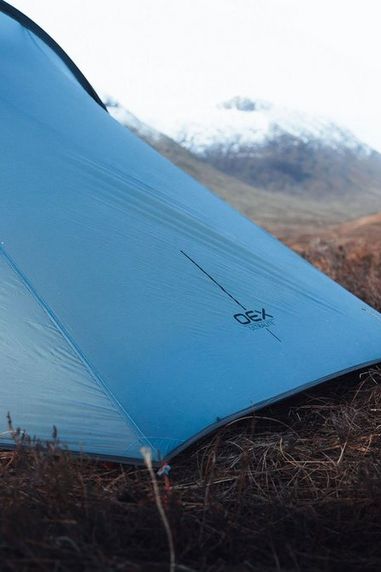British people love to cycle. Statistics tell us that in the UK over 2.8 million adults ride their bike at least once per week. Whether that’s commuting, on the BMX track, the mountain trails, or out on a long weekend road ride, it’s undeniable that for many people cycling is a lifestyle, not just exercise.
But like all activities that require specific kit, cycling can quickly become a mine-field of jargon and technical info. If you don’t know your derailleur from your drop-handlebars, or if you think Shimano is a kind of sushi, then don’t worry. This guide will give you all the basic information you need to begin life on two-wheels.

What type of bike do I need?
Cycling isn’t a one-bike-fits-all activity. Different terrains and styles of riding require completely different machines. Road bikes, MTB or mountain biking, the versatile ‘hybrid’, or even new E-bike technology – they all feature designs and technology specific to that style of cycling.
So what do these terms mean?
Road cycling is one of the most popular sports in the UK. This is a fast-paced discipline in which speed, agility and endurance all come to the fore. For that reason, road bikes are designed to limit friction, with narrow tyres, lightweight frames and dropped handlebars to reduce wind-resistance.
Trail and MTB is where the action is for a lot of outdoor enthusiasts. MTB (mountain bikes) are designed to withstand everything the environment can throw at them. This means big chunky tyres that offer plenty of grip, sturdy frames and front forks that won’t buckle under impact.
You have the option of a full-suspension bike or a ‘hardtail. Full suspension means suspension at the front AND rear forks, for comfort on rough terrain or big drops. A hardtail has no rear suspension. That may sound painful, but fans of hardtails suggest that the lack of suspension promotes better positioning and posture and gives more control over descents. They are also generally cheaper and easier to maintain.

Commuter bikes are built to balance comfort and convenience with enough speed to get you to work on time. These bikes tend to have a more relaxed riding position than standard road bikes, with chunkier tyres to limit punctures, riser handlebars to keep you upright, and some cushioning from the suspension.
E-Bikes are a fairly new phenomenon in the cycling world. In the simplest sense, they are a traditional bike frame with an onboard electronic motor to assist with pedalling and uphills. Basically, it takes some of the effort out of cycling for a more laid-back leisure ride or touring holiday.
E-bikes can also help with commuting to work if you don’t want to be entirely reliant on your own pedal power on a wet Monday morning. They are also a good return-to-fitness tool following injury, or if you are entirely new to cycling.
Road-racing bikes or mountain bikes are rarely motor-assisted – E-bike tech is most commonly found on hybrid or tourer bikes.
For more information on E-bikes and how they work, check out our Introduction to Electric Bikes, and take a peak at the new Calibre Kinetic E-Bike on our store.
What is a ‘hybrid’ bike?
A hybrid bike is a bit of a catch-all term in modern cycling. It is used to describe a bike that sits partway between a road and MTB design.
They generally have fatter tyres, riser handlebars and are not as light as your typical road bike. They are often more comfortable though, so if you are looking to cycle amiably around town, with a little bit of trail thrown into the mix, then a hybrid may be the perfect option. Often people think that hybrid means the worst of both worlds, but some next-generation hybrids are actually packed with the best of both disciplines. A bike like the Calibre Dark Peak is designed as a take-you-anywhere, all-in-one adventure package.

Do you need a women-specific bike?
The answer to this one is maybe. It’s really all about the ‘geometry’ (the angles and frame design of the bike) and whether certain shapes are more beneficial for male or female cyclists. The theory was always that women had longer legs proportionate to their height, but are shorter in general, with less muscle mass and narrower frames. This means narrower handlebars and shorter tubes for a comfortable reach.
In reality, it is all about personal comfort. Anyone buying a bike, regardless of their gender, should consider their own height and preferences. Mountain bikes, for example, have wider handlebars than road bikes, so a large MTB may be uncomfortable or even unsafe for a smaller framed person.
Generally speaking, women with smaller frames will be more comfortable on a female-specific bike. Equally, if you have disproportionately long legs compared to your torso, then a women’s bike may better suit you. Unisex bikes do cater to a huge array of body shapes, however, so you shouldn’t feel confined to the women-only range. The lowest adult unisex bike frame size is 44cm, suitable for someone 5ft or just under.
Bike-sizing: how does it work?
Finding the right bike size for you involves a number of factors – the type of bike, your preferred riding position and, obviously, your own body. This is a general outline to help you make an informed choice.
The ‘height’ of a bike refers to the length of the seat tube. This is the tube that leads down from directly under your saddle to the crank arm. (see diagram below). To make things a little more complicated, road bikes tend to be measured in centimetres, whilst MTB’s are measured in inches.
When you stand astride the bike, with a leg over each side, there should be at least 2cm of clearance between your body and the top tube. This is to prevent injury if you suddenly slip off the saddle (ouch!). This is known as the ‘stand-over height’ of the bike.
Therefore, to get a well-fitting bike, you need to know your inside leg measurements.
Reach is also an issue. This determines how comfortably you can hold the bars, change gear, brake etc. To measure your reach, you need to find the difference between your arm span and your height. If you have a positive reach (arm span longer than height), go for a bigger bike. If your index is negative, opt for a smaller frame.
Bike Size Guide
**This a broad guide. Please bear in mind that specific brands may differ slightly.

What about kids’ bikes?
Whereas adult bikes are sized according to their frame, kids’ bikes use the wheel size.
A child’s first pedalled bike - as opposed to a ‘balance bike’ – starts at a 12-inch wheel. This would be appropriate for a 3-5-year-old. The range goes up by an inch for each year, topping out at 26” for an average 10-12-year-old. At this point it would be best to make the transition to an appropriately-sized adult bike.


Bike components: what’s what?
Cycling comes with a lot of jargon and technical vocab. This can make window-shopping or online browsing a little overwhelming. Here is a glossary of the more frequently used terms, and what part of the bike they refer to.


Frame – the word used for the main skeleton of the bike. Made up of metal or carbon tubes that attach to the wheels, handlebars, gears etc.
Groupset – this is the collective name for the crucial mechanics of your bike. It includes the brakes, gears, shifters, derailleurs, chain, cassette, and chainwheel.
Cassette – the collection of cogs at the rear of the bike, situated in the middle of the rear wheel. This, multiplied by the number of chainwheel, determines how many gears you have. The derailleur moves the chain across the cassette.
Chainwheel / Chain ring – the metal cogs or teethed rings that sit near your pedals. Your bike will have between 1 and 3 of these. They transfer your pedal power to the front wheel
Crank / Crank Arm – the arm that connects your chainwheel to the pedal.
Derailleur – this is the mechanism that moves the chain from one ring to another each time to shift gears. All bikes will have a rear derailleur and, if you have more than one chainwheel, you will have a front derailleur too.
Stem – the tube that attaches your handlebars to the bike. This is adjustable and can be extended or shortened to match your preferred riding position.
Forks – the pair of tubes that extend from the stem down either side of the front wheel. These are what turns the wheel when you turn the handlebars. Mountain bikes and some road bikes will have suspension forks to absorb impact. Some bikes also have rear suspension for a more comfortable ride.

How do bike gears work?
The number of gears on a bike is one of the main things that distinguishes between models.
Your total gear count is the number of cogs/sprockets in your cassette multiplied by the number of chainwheels. See the diagram above – the cassette is the set of cogs on your back wheel, your chain wheel is the cog attached to the crankset and pedal.
An example: if your cassette has 7 cogs, and you have 3 chain wheels, this means your total gear count is 21. An 8-speed cassette with 2 chainwheels would give you 16 gears. Get it?
The benefit of more gears is that you can more finely tune your pedalling speed, also known as your cadence. This means getting the best possible power output for the amount of effort.
When you change gear – known as shifting – it aligns the bike chain with a different combination of front and rear cogs. This increases or decreases the amount of effort needed to pedal and move forward.
‘High’ gears require more effort but apply LOTS of power to the wheels – this is ideal when you are already travelling at speed or going downhill.
‘Low’ gears are for steep hills or getting the bike moving. There is less resistance, but less impact on your forward momentum. If you try to pedal in a low gear on the flat or downhill you’ll just be spinning your pedals pointlessly.
If you are looking for a bike to make a nice, flat and steady daily commute, or if you don’t plan on tackling gradients very often, then you may opt for a bike with fewer gears or even a single-speed bike. These require less maintenance.
However, if you are looking to tackle wildly undulating routes or set speed-records, then extra gears are your friend.
What other equipment do I need?
Depending on how serious you take your cycling, there is a huge array of accessories and clothing to enhance your experience. We have put together a guide to cycling gear that will help you get kitted out.
The absolute must-haves are a good helmet and reliable lighting. Regardless of your cycling discipline of choice, a bike helmet is a 100% requirement. These come in a wide range of designs, with an ever-evolving balance of lightweight materials and impact resistance.
MIPS technology is a game-changing development. This stands for Multi-directional Impact Protection System. Most simply, this allows a layer of the helmet to rotate under impact, guiding that rotational force around your head rather than directly to your brain.
Lighting is also essential for safety. Night-riding can be a joy – it’s quiet, calm and you see the world from a whole new perspective, but if you can’t be seen you’re taking your life in your hands. Equally, early morning commutes or even overcast weather can significantly reduce your visibility to others.
Bike lights come in all forms – handlebar-mounted, rear-mounted, helmet-mounted. It all depends on your preference and your bike model. You can’t go wrong with covering yourself front and back though. Also, opt for a light with a red-beam option, as this enhances your visibility even further.

Hopefully this guide helps you make an informed choice when it comes to your first or next bike? If you still have questions, feel free to drop them into the comments below.
Check out our extensive range of bikes, clothing and cycling equipment to enhance your life on two wheels.



